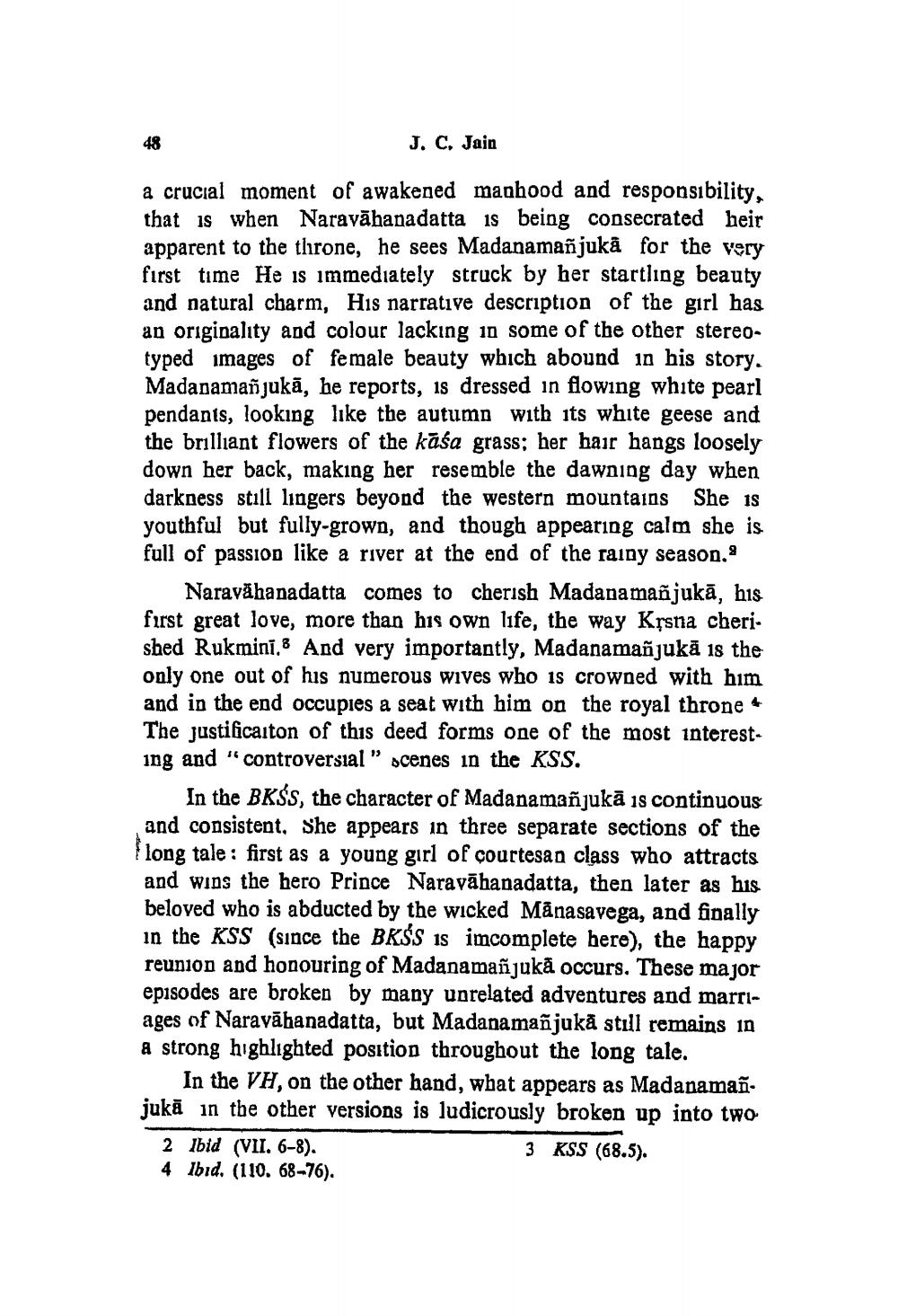________________
48
J. C. Jain
a crucial moment of awakened manhood and responsibility, that is when Naravahanadatta is being consecrated heir apparent to the throne, he sees Madanamañjukā for the very first time He is immediately struck by her startling beauty and natural charm, His narrative description of the girl has an originality and colour lacking in some of the other stereotyped images of female beauty which abound in his story. Madanamañjukā, he reports, is dressed in flowing white pearl pendants, looking like the autumn with its white geese and the brilliant flowers of the kāśa grass; her hair hangs loosely down her back, making her resemble the dawning day when darkness still lingers beyond the western mountains She is youthful but fully-grown, and though appearing calm she is full of passion like a river at the end of the rainy season."
Naravahanadatta comes to cherish Madanamañjukā, his first great love, more than his own life, the way Krsna cheri shed Rukmini. And very importantly, Madanamañjukā is the only one out of his numerous wives who is crowned with him and in the end occupies a seat with him on the royal throne The justificaiton of this deed forms one of the most interesting and "controversial" scenes in the KSS.
In the BKSS, the character of Madanamañjukā is continuous and consistent. She appears in three separate sections of the long tale: first as a young girl of courtesan class who attracts and wins the hero Prince Naravahanadatta, then later as his beloved who is abducted by the wicked Manasavega, and finally in the KSS (since the BKSS is imcomplete here), the happy reunion and honouring of Madanamañjuka occurs. These major episodes are broken by many unrelated adventures and marriages of Naravahanadatta, but Madanamañjukā still remains in a strong highlighted position throughout the long tale.
In the VH, on the other hand, what appears as Madanamanjuka in the other versions is ludicrously broken up into two 3 KSS (68.5).
2 Ibid (VII. 6-8).
4 Ibid. (110. 68-76).




